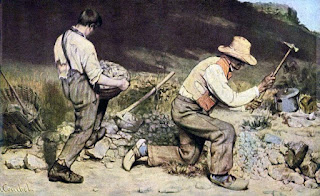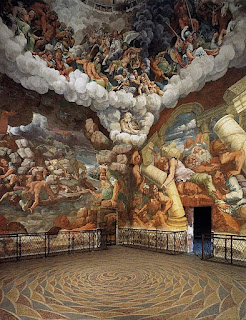Baroque Renaissance Blog
Baroque Art
Baroque art is a style of European architecture, art, and music that began in the 1600’s but flourished in the early 17th century. It is inspired by mannerism and characterized by its movement, emotion, illusion, and etc. specific characteristics that you might notice in a Baroque piece of art would be the use of shadowing and color, the type of setting and the emotion/dramatics. The architectural piece of Baroque art that I chose is called, “Apollo and Daphne” by Gian Lorenzo Bernini created from 1622-1625 and it was placed in the Borghese Gallery in Rome, Italy. This piece is inspired by Ovid’s Metamorphoses and the story of Apollo and Daphne.
The Story of “Apollo and Daphne”
This is quite a disturbing tale that is about Apollo being struck with Cupid‘s love arrow and seeks out the daughter of the river god, Daphne. His love for her became insufferable and obsessive, it became too much for Daphne so she decided to run away from Apollo’s ruthless love. But yet Apollo would continue to follow Daphne, and right when Daphne was about to give up hope and strength, she prayed to her father to get rid of her beauty or her body that encapsulates this curse. Before her prayer ended a stupor came over her, a thin layer of bark covered her skin, her legs turned into roots, her arms turned into branches, her hair turned into leaves, but yet his desire for her still remains the same. So in the end Daphne couldn’t escape Apollo’s love.
My Overview of “Apollo and Daphne”
At first glance of this disturbingly beautiful piece of architecture I knew that I wanted to learn more and write about it. There really is a lot to take in… I can feel the emotion of fear coming from Daphne, and the undesirable lust from Apollo towards Daphne. Bernini did an incredible job just on the little details of the sculpture like looking at different perspectives which is why I’m incorporating three different angles into this blog is because each angle tells a different story in my opinion. In one angle it shows desire and fear, in another angle it shows the transformation of her turning into a tree and his love still undying for her, while in the front angle it shows the opposite, that Apollo is desperate and terrified while Daphne isn’t so scared anymore. I just think it’s so brilliant that Bernini knew how to incorporate three different parts of the story into one statue, incredible. I don’t necessarily think I would want to own a piece of this since it is a reminder of a man that won’t take no for an answer in order to pursue a woman, it’s a bit disturbing for me.
The Reformation and The Council of Trent
How does The Council of Trent, and The Reformation tie in to Baroque art? Well, Martin Luther published the “95 Theses” in 1517 and that caused conflict within the Catholic Church because there was criticism within the book towards the religious organization. With all the hate coming towards the Catholic Church they decided to create The Council of Trent in order to “clean up” the “misinformation” being spread, The Council of Trent was created in 1545 by pope Paul III. This entire era affected art because The Council of Trent directed artists to create art that was spiritual, religious and sensational that would emotionally persuade the viewer towards the religion. So therefore Baroque art was heavily influenced due to The Council of Trent and the Reformation era.
Citations -
Bernini, Author: Gian Lorenzo. “Apollo and Daphne by Bernini.” Galerie Borghèse, 30 June 2022, https://borghese.gallery/collection/sculpture/apollo-and-daphne.html.
Gotthardt, Alexxa. “Bernini's ‘Apollo and Daphne’ Is an Unnerving Depiction of Unwanted Desire.” Artsy, 26 Dec. 2019, https://www.artsy.net/article/artsy-editorial-berninis-apollo-daphne-unnerving-depiction-unwanted-desire.
McKay, Brett & Kate. “The Basics of Art: The Baroque Period.” The Art of Manliness, 25 Sept. 2021, https://www.artofmanliness.com/character/knowledge-of-men/the-basics-of-art-the-baroque-period/.






Laney, the piece you chose is absolutely stunning and one that I almost wrote about as well. Bernini created so many beautiful statues during the Baroque Era. I wrote about his piece called "The Ecstasy of Saint Teresa". Your Analysis on the sculpture was done beautifully, I love how you talked about angles and how each angle tells a different part of the story. Your connection to The Council of Trent was also done very well, this piece was certainly impacted and influenced by this period of time, as were many of Bernini's pieces. After looking at this piece specifically, I was very curious if Bernini used any models for his works and upon investigating I found that he apparently did not. In this article, it talks about how he could just see the image that he intended to create on the marble or medium he was using to carve into in his mind (https://artincontext.org/apollo-and-daphne-by-bernini/). I find this to be incredible because these statues are so intricate and detailed I can't imagine just doing it with no other resource than your imagination, amazing.
ReplyDelete